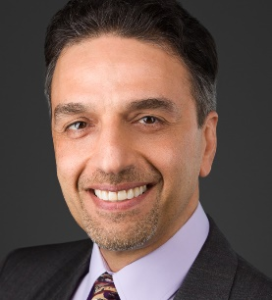RM #105 – Risk Estimation, Control, and Evaluation
Course description:
This course covers the integration of all the underlying analyses for the identification of hazard, and sequences of events, to the estimation, evaluation and control of the risks. It shows how to assess the overall residual risk and ensure traceability throughout the risk management file: from hazards to sequences of events, hazardous situations, harms, risk controls, and verifications of risk controls.
Intended Audience:
RM #105 is designed for people who will be managing the risks of medical devices, and providing answers to question such as: Are the risks acceptable? Have the risks been reduced as far as possible? What is the safety impact of a proposed change? Are the risk controls verified?
The audience for RM #105 includes quality, systems engineering, and risk managers.
Objective:
RM #105 offers knowledge on the following topics:
- Integration of underlying analyses, such as FTA and FMEA
- Risk estimation
- Risk Evaluation
- Risk controls
- Risk traceability
- Distinction of the three types of risk controls
- Verification of risk controls
- Distinction of ALARP vs. ALARA vs. AFAP
- AFAP risk reduction end-point logic
- Boolean Algebra for quantitative residual risk calculation
Upon completion, participants should:
- Understand how to integrate underlying analyses such as FTA and FMEA to create the RACT
- Know the different methods of estimating risk
- Understand how to do risk evaluation
- Know the three types of risk controls and how to distinguish them
- Understand the three approaches to risk reduction
- Be able to decide how far to reduce risk for the AFAP approach
- Understand how to use Boolean algebra to compute quantitative residual risks
- Know how to estimate the overall residual risk
Duration: 3:30 hours
Language of instruction: English
Means of delivery: In-person, and online via Zoom
CEU: ASQ and CSQE certified professionals can receive CEUs. Ask for a certificate of attendance.
About the Instructor
Award winning, international educator, consultant, and author
 Bijan Elahi has worked in risk management for medical devices for over 30 years at the largest medical device companies in the world, as well as small startups. He is a Technical Fellow, and the Medtronic corporate Advisor on safety risk management of medical devices. In this capacity, he offers education and consulting on risk management to all Medtronic business units, worldwide. Bijan is a lecturer at Eindhoven University of Technology (Netherlands), where he teaches risk management to doctoral students in engineering. At the invitation of the FDA, he teaches a graduate course on medical device risk management at Drexel University (Philadelphia, USA).
Bijan Elahi has worked in risk management for medical devices for over 30 years at the largest medical device companies in the world, as well as small startups. He is a Technical Fellow, and the Medtronic corporate Advisor on safety risk management of medical devices. In this capacity, he offers education and consulting on risk management to all Medtronic business units, worldwide. Bijan is a lecturer at Eindhoven University of Technology (Netherlands), where he teaches risk management to doctoral students in engineering. At the invitation of the FDA, he teaches a graduate course on medical device risk management at Drexel University (Philadelphia, USA).
Bijan Elahi is the founder of MedTech Safety, Inc., an education and advisory company. He has educated over 10,000 individuals worldwide with outstanding results. Bijan is a frequently invited speaker at international professional conferences, and is also a contributor to ISO 14971, the international standard on the application of risk management to medical devices. He is the author of the best-selling book: Safety Risk Management for Medical Devices, published by Elsevier publishing.
Interviews – Podcasts (audio) | · ISO 14971; What’s difficult about risk mgmt; Quantitative risk mgmt; AFAP … (2023) · Risk Management – Aerospace to Medical Devices; Uncommon Knowledge (2023) |
Interviews – Podcasts (video) | |
Articles about Bijan | |
Whitepaper | |
Books | · Safety Risk Management for Medical Devices (2nd Edition, 2022) (1st Edition, 2018) |
